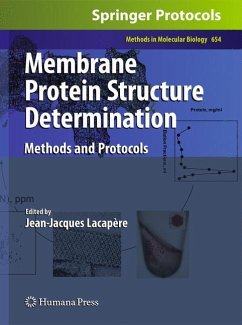
Microfluidic Techniques
Reviews and Protocols
Herausgegeben: Minteer, Shelley D.

PAYBACK Punkte
51 °P sammeln!
Over the last ten years, miniaturization has dramatically shrunk the size of both cellular telephones and chemical instrumentation, and now also holds the promise of developing portable, inexpensive, and disposable analytical systems on a microchip. In Microfluidic Techniques: Reviews and Protocols, hands-on researchers review the principles behind successful miniaturization and describe the key techniques for miniaturizing large-scale biochemical and bioanalytical methods for microchip analysis. The authors cover not only the most popular methods for the fabrication of microchips (photolithog...
Over the last ten years, miniaturization has dramatically shrunk the size of both cellular telephones and chemical instrumentation, and now also holds the promise of developing portable, inexpensive, and disposable analytical systems on a microchip. In Microfluidic Techniques: Reviews and Protocols, hands-on researchers review the principles behind successful miniaturization and describe the key techniques for miniaturizing large-scale biochemical and bioanalytical methods for microchip analysis. The authors cover not only the most popular methods for the fabrication of microchips (photolithography, laser ablation, and soft lithography), but also microfluidic techniques for such bioanalytical assays and bioprocesses as DNA analysis, polymerase chain reaction (PCR), immunoassays, and cell reactors. Highlights include PCR on a microchip, microscale cell culturing, and the study of cellular processes on a microchip. The protocols follow the successful Methods in Molecular Biology series format, each offering step-by-step laboratory instructions, an introduction outlining the principles behind the technique, lists of the necessary equipment and reagents, and tips on troubleshooting and avoiding known pitfalls.
Comprehensive and informative, Microfluidic Techniques: Reviews and Protocols synthesizes the chemistry, biology, and engineering underlying microfluidic devices so that molecular biologists, as well as analytical and clinical chemists, can advance easily from macroscale to microscale biochemical and bioanalytical techniques.
Comprehensive and informative, Microfluidic Techniques: Reviews and Protocols synthesizes the chemistry, biology, and engineering underlying microfluidic devices so that molecular biologists, as well as analytical and clinical chemists, can advance easily from macroscale to microscale biochemical and bioanalytical techniques.














